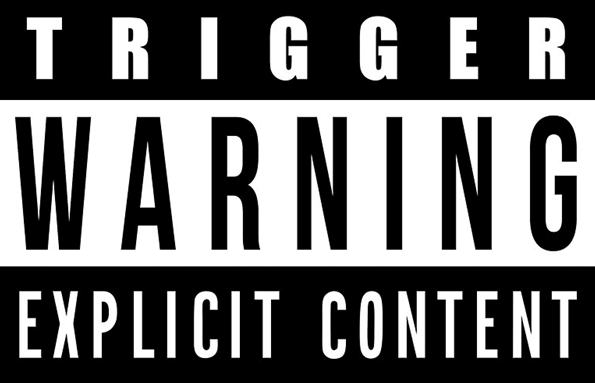Introduction: When Your Website Suddenly Disappears
Imagine waking up one morning to find your website has completely vanished from Google search results. Your rankings, organic traffic, and conversions — all gone overnight. This situation occurs when your site gets deindexed.
Being deindexed means that Google has removed your website or specific pages from its search index. Even if you type your domain or exact page title into Google, it won’t appear. For any business that relies on organic visibility, this can be devastating.
Understanding what causes deindexing and knowing how to recover from it is crucial. With a strategic recovery plan and the proper support from SEO services, your website can regain visibility and trust with search engines.
What Does Deindexed Mean in SEO?
In SEO terms, deindexing refers to a webpage or an entire website being removed from Google’s searchable index. Once deindexed, your pages no longer appear in search results, regardless of their previous rankings.
Think of Google’s index as a massive library that catalogues every webpage. If your page is deindexed, it’s like that book being removed from the shelves — no one can find it.
Deindexing can happen automatically due to technical issues or manually when Google detects violations of its quality guidelines. The impact is immediate: visibility drops to zero, and organic traffic disappears.
How to Check If Your Website Is Deindexed
Before assuming your website has been removed, it’s essential to confirm it. Here are simple ways to check:
- Use the “site:” Command
Type site:yourdomain.com in Google.
- If results appear, your site is indexed.
- If no results show, your site or specific pages are likely deindexed.
- If results appear, your site is indexed.
- Check Google Search Console
Look under “Pages” → “Not Indexed” or “Manual Actions” for warnings or coverage issues. - Monitor Your Analytics
A sudden drop in organic traffic could indicate partial or complete deindexing. - Search Your Brand Name
If your homepage and branded keywords don’t appear, it’s a strong sign of deindexing.
Why Do Websites Get Deindexed?
There are multiple reasons a site can be deindexed. Some are technical, while others stem from policy violations or spam signals. Let’s look at the most common causes:
1. Manual Penalties
When Google’s reviewers detect manipulative or unethical SEO practices — such as buying links, cloaking, or spammy content — they issue a manual penalty. This can result in partial or complete deindexing.
2. Technical Errors
Technical problems often cause accidental deindexing:
- Incorrect “noindex” tags in your code
- A misconfigured robots.txt file is blocking crawlers.
- Broken redirects or canonical errors
- Server downtime during crawling
These issues can cause Google to drop your pages from its index without warning.
3. Low-Quality or Duplicate Content
If your website contains thin, copied, or low-value content, Google’s algorithms may remove those pages from the index to maintain quality results.
4. Security Problems
If your site has been hacked or infected with malware, Google will often deindex it to protect users from harm.
5. Violations of Google Guidelines
Using black-hat tactics, keyword stuffing, or hidden links violates Google’s Webmaster Guidelines. Such actions can trigger algorithmic deindexing.
The Impact of Being Deindexed
Being deindexed can cause serious short- and long-term damage to your online business:
- Loss of Organic Traffic: Your pages stop appearing in search results, causing a sudden traffic collapse.
- Revenue Drop: Without traffic, leads and sales decrease significantly.
- Brand Visibility Issues: Customers may assume your site has shut down or is unsafe.
- Wasted SEO Efforts: All prior optimisation work becomes useless until reindexing occurs.
The sooner you detect and fix deindexing, the faster your website can recover.
How to Fix a Deindexed Website
If your site or pages are deindexed, don’t panic; most cases are reversible. Follow these steps carefully:
1. Identify the Reason
Log in to Google Search Console and check for messages under “Manual Actions” or “Security Issues.” Understanding the reason behind deindexing is the first step toward recovery.
2. Correct Technical Issues
If your issue is technical:
- Remove “noindex” or “nofollow” tags.
- Edit the robots.txt file to allow Googlebot access.
- Ensure all redirects and canonical tags are correctly set.
- Confirm that your site is accessible, fast, and mobile-friendly.
A technical audit from professional digital marketing services can efficiently pinpoint and resolve these problems.
3. Improve Content Quality
Rewrite low-quality or duplicate pages with valuable, unique information. Add visuals, internal links, and structured headings. High-quality content encourages reindexing.
4. Remove Harmful Backlinks
Toxic or spammy backlinks can contribute to penalties. Use Google’s Disavow Tool to remove or discredit these links and rebuild a clean link profile.
5. Resolve Security Issues
If your site was hacked, clean it immediately. Use tools like Google’s Safe Browsing Report to verify security before reapplying for indexing.
6. Submit a Reconsideration Request
Once everything is fixed:
- Go to Google Search Console.
- Open “Manual Actions.”
- Submit a “Request Review.”
Explain what caused the issue, what your actions are, and why your site should be reindexed.
Google’s team will manually review your request. Your site will return to the index within days or weeks if approved.
How Long Does It Take to Recover from Deindexing?
Recovery time depends on the cause:
- Minor technical errors: a few days
- Manual penalties: several weeks
- Security issues: once verified, clean
- Algorithmic removals: until the next crawl cycle
Consistent monitoring and optimisation can shorten recovery time significantly.
Best Practices to Prevent Deindexing
Once your site is reindexed, follow these best practices to avoid future issues:
- Publish High-Quality Content Regularly
Focus on original, user-focused, and relevant information. - Audit Technical Health Monthly
Check crawl errors, robots.txt, and site performance frequently. - Stay Updated on Google’s Guidelines
Avoid risky link-building or black-hat SEO tactics. - Keep Your Site Secure
Update CMS, plugins, and SSL certificates to prevent malware or hacking attempts. - Monitor with Search Console
Track coverage reports and fix issues before they escalate. - Maintain a Natural Link Profile
Avoid paid or irrelevant backlinks and focus on earning genuine authority links.
The Importance of Professional Help
Recovering from deindexing requires technical knowledge, time, and consistent monitoring. A single mistake can delay recovery or trigger another penalty. Partnering with experts in SEO services ensures your website remains compliant, optimised, and secure. These professionals handle audits, penalty recovery, and preventive monitoring so your brand can focus on growth instead of crisis management.
Conclusion
Getting deindexed can feel like your website has disappeared from the digital world — but it’s not permanent. You can regain your visibility and rankings by identifying the cause, fixing technical issues, improving content, and staying compliant with Google’s guidelines.
Think of deindexing as a warning sign — a chance to strengthen your website’s structure, content, and security. With consistent optimisation and professional guidance, your site can return stronger, safer, and more search-friendly than before.
If your site has been de-indexed and you’re looking for expert help to diagnose the cause and restore visibility, consider partnering with Wildnet Technologies — their team specializes in handling de-indexation issues and guiding sites back into search engine results.
FAQs
1. What does “deindexed” mean?
It means your website or page has been removed from Google’s search index and no longer appears in search results.
2. How can I check if my website is deindexed?
Use the site:yourdomain.com command in Google or check your Google Search Console for indexing issues.
3. Can a deindexed site be restored?
Yes. Once you fix the underlying issues and request reconsideration, Google can reindex your site.
4. How long does reindexing take?
It typically takes a few days to several weeks, depending on the reason and how quickly you act.
5. What causes a site to be deindexed?
Common reasons include technical errors, low-quality content, policy violations, or security problems.
Read more







